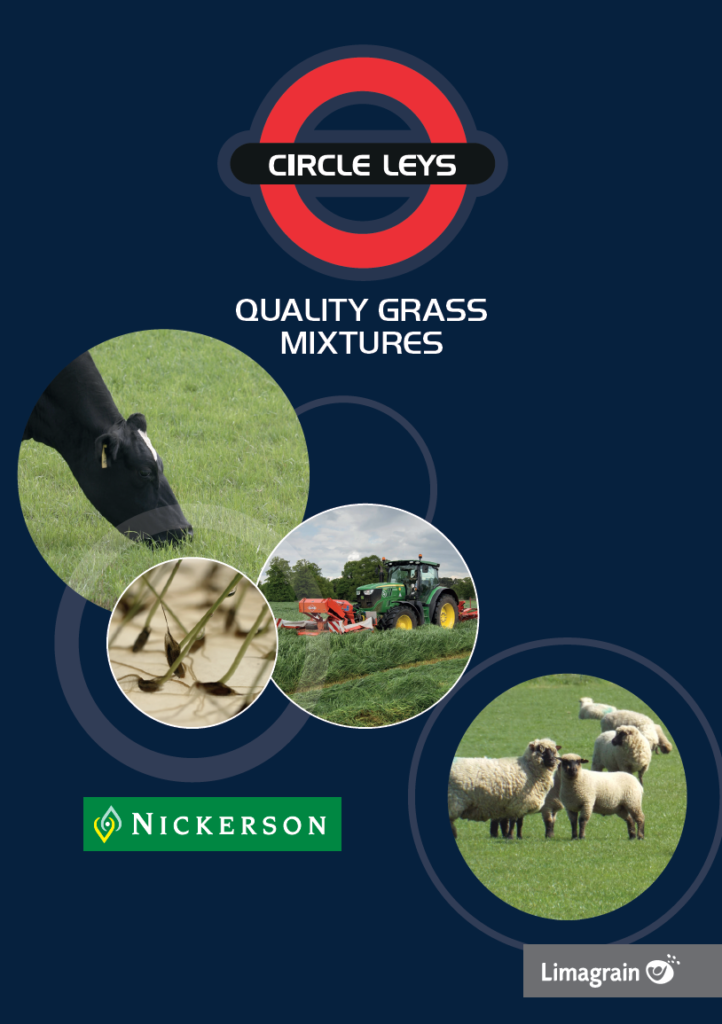Farms across the country have had a tough time over the last few years growing OSR. Many growers have cut back, and several have removed OSR from their rotation altogether. However, figures from Defra are showing that the area of OSR grown has increased in the Southeast of England. So, do the farms of the south know something the rest of the country does not?
The Southern part of the UK was decimated in 2019 with the OSR crop having the weather and the dreaded Cabbage Stem Flea Beetle (CSFB) against it. Many growers took the hit and swore they would never grow OSR again. However, many have kept going and have learnt to live with this pest.
Growing the correct variety; OSR is a high input crop so choosing a high yielding variety that can offer maximum return is key. LG Armada is the highest yielding OSR variety on the AHDB recommended list. Along with high yield, LG Armada also has pod shatter resistance, Turnip yellows virus resistance along with good resistance to light leaf spot and stem canker. Vigour varies between varieties, some have better Autumn vigour and some better Spring vigour, speak to your local seed specialist to find out which variety will suit you best.
Drilling timing and soil moisture; this is key to a fast establishment farmers that drill into moist seedbeds with rain in the forecast have more of a chance to beat adult CSFB damage, there is no doubt that we go into danger zone when the OSR emerges and then runs out of moisture. We need to be looking at the forecast rather than the calendar.
Companion and trap crops; There has been some anecdotal evidence of success with companion crops, especially when these companion crops are established before the OSR is drilled, the payments that can be claimed through the new Single Farm Incentive makes this even more attracting. OSR volunteers can also act as a trap crop and divert CSFB away from adjacent cash crops. When trap crops are destroyed, CSFB eggs or larvae die. In trials, the approach reduced adult CSFB infestation (by up to 88%) and damage (by up to 76%) in the oilseed rape cash crop. However, benefits were variable and not always observed.
OSR prices rising? Well, there are two things you can never really predict in farming, one being the weather and the second being markets. Prices have come back a long way since the immediate aftermath of Russia’s invasion of Ukraine but are starting to climb again at the time of writing in late May. There are also other reasons for optimism, the EU is set to ban unsustainable palm oil imports this year and this could lead to producers switching to rape seed oil instead, a cut in Canada’s canola production estimate for 2024/25 due to spring acreage shifts to wheat on the back of poor growing conditions has also been supporting prices more recently.
So, there is much reason to be optimistic for a crop that we know works well in cropping rotations, spreads the harvest workload, and has, and can still return a healthy gross margin.
Reduced cultivation could increase maize maturity timesTrials are underway in Cornwall and have previously been run to show the effects of strip till drilling compared to conventional ploughing cultivation and its positive effects.
The main benefits of no-till being; a reduction of costs in time and diesel, to help improve soil health and organic matter and to reduce chances of capping and soil erosion. Although no significant yield differences have been found, are there any other differences that need to be considered when trying an alternative cultivation techniques?
Picking a maize variety with a maturity FAO that fits within your rotation and planned harvest date is an important decision, especially with the prolonged bouts of weather extremes we are currently experiencing, but does altering your drilling method have any bearing on this? Some farm-based in the Southwest have shown an increase in maturity length by a couple of weeks from the same variety grown in the same field. As maize is a lazy rooting crop, it is thought that the extra time is needed for the roots to set in a less worked seed bed. This can have a major potential knock-on effect for the rotation or the ability to get the crop harvested at an appropriate weather window in line with the crop maturity.
Switching to an earlier maize variety when looking at reducing cultivation could be key for still achieving that earlier harvest for your maize. Growing earlier varieties such as Prospect, Trooper and Duke with high vigour scores fit this scenario well!

As we emerge from what has seemed like one of the wettest winters in recent times finally some field work is starting to take place. Muck is being spread, grass being cut, fields starting to be prepared and now thoughts turn to maize drilling.
Before we think about drilling, we need to get the absolute essentials right which is to first consider the variety to grow. The difference in maize varieties is vast and many factors influence what variety you may choose to grow. Certainly, for my own customers there has been a re-focus on growing earlier varieties such as Prospect, Trooper and Duke because of the challenging harvest period we faced in 2023. Varieties also vary in other factors that growers may not be aware of, such as vigour, disease, digestibility and starch content. There have also been variations in disease pressure this past year, particularly fusarium. Fusaruim kills the plant prematurely and its prevalence is down to a number of factors including climatic and varietal, Prospect, Ambition and promise have coped very well this year.
Getting seed bed and soil conditions correct is another basic that must be right for a successful crop. There is an acceptance that maize has “lazy roots” so it is important to avoid any compaction and attain deep loose seed beds. Weed pressure needs to be managed where required with caution needed when applying herbicides at high temperatures.
When should I drill? Well, the rule of starting to drill when soil temperatures reach 8°C for five consecutive days or 6°C for maize grown under degradable film should be applied. It is important to note that soil temperatures fluctuate more in lighter soils so forecasts need to be looked at and trying to plant after any forecasted frosts. Maize is a crop that should always be sown into moisture. Drilling depth can vary from 2.5 to 10 centimetres, it all depends on where the soil moisture depth is, although growers this year will not likely need to look deep! Seed rates vary from around 35,000 seeds an acre for grain maize to forage maize at 40,000 seeds an acre on light sandy favourable ground and 45,000 seeds an acre for earlier planting on heavier ground.
Our seed specialists are always on hand for advice regarding choosing the correct variety for your farm and all aspects of seed rates and drilling depths at anytime.
Call Fraser on:
07811 746 589
The new SFI schemes are prompting many conversations with our growers, especially around herbal leys and particularly SAM 3. Essentially, the new name for GS4 within the older Countryside Stewardship Scheme.
There are many mixtures available in the marketplace for growers to choose from that will be compliant with the scheme’s protocol. But it is not until you really pay attention to these mixtures and investigate what makes up their contents, that you see how different they all are.
A grower could end up with a herbal ley that grows just enough to require a topper over it once a year, or a herbal ley that will perform closer to the outputs of a conventional ley.
A frequent question from growers that are looking to sow a SAM3/GS4 herbal ley in place of a conventional grass ley is; can I maintain production whilst qualifying for the SFI scheme’s intentions, and be able to claim a payment?
In short, herbal leys simply will not match a top performing ley for yield or quality, but we know that we can get close with our mixtures.
Conventional grass mixtures have been designed and tested over many years using varieties that have been bred and cultivated over decades, such as our Circle leys, that have been true to their concept since 1947.
The best performing leys use varieties that complement and will grow together, in harmony. Scheme compliant mixtures simply do not have the ability to compete, whichever way you cut it – wildflowers and herbs will not yield, harmonise, or have the feed value in comparison with modern clovers and ryegrass.
You also have to factor in the animal’s desire to eat what is in front of it and whilst herbs sound ideal, too much is overpowering, and an animal will spend more energy looking for the alternative.
From our experience with CSS and lessons we have learnt, Nickerson and Limagrain have looked to get as close as we can with the mixtures.
First off, we use only seed of the highest quality and vigour and then design a herbal ley with the same approach as a conventional ley. Indeed, as for our SAM 3/GS4 mixtures we start with using one of our conventional leys as a base and remove/add in constituents to make it compliant.
We can also tailor a mixture to include more higher yielding and quality grasses and clovers and less productive legume types, herbs and wildflowers that will offer least in terms of production. We therefore offer different mixtures with different percentages of ryegrass and clover; all of which are compliant with the scheme but will suit growers’ requirements accordingly.
This year, I have been working with a grower, where we have been growing our multispecies 75 as seen in the pictures below.

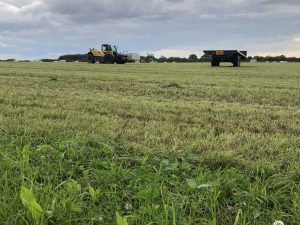
These photos were taken on the 3rd of August, and this was its 4th cut of the year already and two grazes. Yields were to a point of causing an issue of what to do with the excess! Quality is also very high.
So, can you have your herbal cake and eat it? Well, talk to your local Nickerson Seed Specialist to find out…
Oilseed Rape Establishment 2023…. What have we learnt?We are all too aware of the damage Cabbage Stem Flea Beetle (CSFB) can cause, it is fair to say that growers who have had no experience with this pest are few and far between and this year was no exception.
We started August with wet weather, which led to some growers drilling early to try and get the crop off and away from Cabbage Stem Flea Beetle. This has largely worked, consequently though there are some big canopies out there, which need to be carefully managed and growth regulators used where necessary.
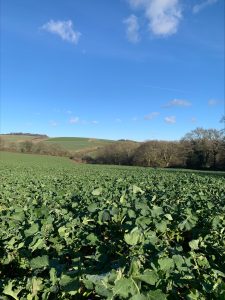
Early August drilled Ambassador near Newbury looking very well and was well enough established to grow through the main adult grazing period of cabbage stem flea beetle
If there is a suspected high larvae count, work by AHDB does show that defoliation either through grazing or flailing can lead to a significant reduction in larvae – although caution needs applied, as this should not be considered after stem extension.
Then we had some hot weather towards the end of August. This undoubtedly drives flea beetle migration and activity, which yet again coincided around the bank holiday weekend. Crops drilled this year, 10 days before and days after the bank holiday weekend have struggled most, from what I have seen.
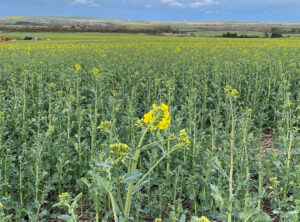
We then had wetter weather after the middle and end of September. This did lead to conducive growing conditions and these crops on the whole look okay, where not underwater. If crops are looking on the thin side, do not be disheartened just yet, OSR has an amazing ability to compensate for lost plants and fill-in gaps.
Slugs seem to have been more of a problem than Cabbage Stem Flea Beetle for some growers this year, thanks to weather conditions driving their activity. They really cannot be underestimated and require extreme vigilance early on.
In many cases, the crops were initially thinned by slugs and then the Cabbage Stem Flea Beetle attacked. The areas most devasted by slug damage are generally on the clay soils. However, the greatest risk and the most damage occurred where crops had been direct drilled with no tillage. In my opinion, any crop direct drilled – be it OSR, cereals or grass seed – increases the risk of slug damage significantly, compared to conventional establishment techniques.
We have all been aware of the cover crops and the use of slurry and digestate to deter the beetles, but I thought by far the most interesting piece of research this year was showing how beetle numbers can be reduced by cultivating the ground straight after harvest and during peak adult migration.
This would also have the added bonus of reducing slug numbers, which are always a significant nuisance to the following wheat crop.
Before you drill grassThe two main factors to consider are your soil status and condition.
Ensure the area is tested for appropriate nutrient levels – pH, in particular, is vitally important.
Full Reseed
Full Reseed: soil needs to be consolidated, which starts early. Every pass should aim to further consolidate the seedbed. Do not wait and roll it twice afterwards – the area will be far more level and uniform if you start consolidation early. Ideally, roll prior to sowing as this also gives a more uniform sowing depth.
Longer term leys will achieve a greater ground cover if the seed is broadcast uniformly, as it attains a high percentage of yield from tiller density.
Short term leys tiller density and growth habit are different, so sowing in rowsq using a conventional drill can be an option.
A two-year break from long term grass is ideal to reduce the risk of pests. Failing this, reducing pest population and dense organic matter can often be achieved by using a grazing catch crop, such as stubble turnips.
Overseeding
Overseeding is simply a short-term fix and will not have a long-term benefit.
It will allow a yield increase in many situations but a field by field assessment is essential. Firstly, consider any pests and how to control them. Secondly, assess the level of undesirable plant species that are present.
More Information
To learn more about Circle Leys, download the Brochure here.
To view the Circle Leys range, click here
Or contact your local Seed Specialist.
Forages to use with grassWhile grass leys provide the backbone of all ruminant diets there are a plethora of other forages.
All these forages maximise their potential when matched with a quality Nickerson Circle Ley.
Maize
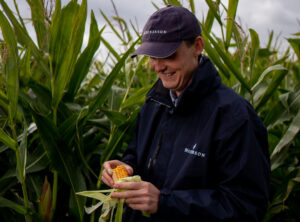 LG maize is a perfect complement to all Circle Leys, with excellent agronomic and feeding characteristics.
LG maize is a perfect complement to all Circle Leys, with excellent agronomic and feeding characteristics.
Fodder beet
LG fodder beet provides an excellent energy source combined with superb dietary fibre.
Lucerne
Lucerne offers a superb forage with the most rumen friendly protein source
Cereals
LG cereals offer many opportunities as a complementary feed in terms of wholecrop and grain using numerous different methods 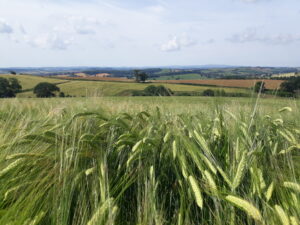
More Information
Contact your local Seed Specialist.
What are GPA and SFC?To improve establishment, most Circle Leys are treated with a GPA and Seed Film Coating as standard.
Growth Promoting Agent
GPA (Growth Promoting Agent) is a researched blend of nutrients essential for plant growth. These stimulate seedling germination, particularly under stress conditions and also encourage larger root systems, enabling the plants to absorb soil nutrients more efficiently.
Seed Film Coating
Seed Film Coating is a technique that forms a polymer film around the seed in which a range of conventional and innovative seed treatments can be carried. Seed Film Coating offers a number of major benefits to the seed and its application.
• Accurate application of GPA seed treatment
• Increased efficacy of the GPA
• Less dust in the seed
• Improved establishment
More Information
To learn more about Circle Leys, download the Brochure here.
To view the Circle Leys range, click here
Or contact your local Seed Specialist.
What sets Nickerson seed quality apart?The UK’s finest range of grass mixtures
Mixture trialling
Nickerson believe in the importance of mixture trialling. Recommended Lists from DARD, NIAB and SAC are used as a starting point, but these take little account of how individual varieties perform when grown together in a farmer’s grass ley. This is where Nickerson research begins. 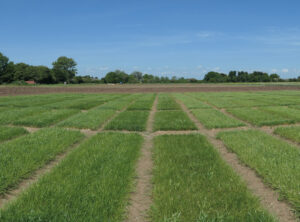
Mixture trialling is the key to ensuring that only the very best grass mixtures find their way onto your farm.
Highest seed standards possible
Good establishment is essential to achieve full production potential. Poor establishment results in weed invasion, increased poaching and loss of yield. Seed of the highest quality is therefore critical to achieve good establishment.
Germination standards

Purity standards

More Information
To learn more about Circle Leys, download the Brochure here.
To view the Circle Leys range, click here
Or contact your local Seed Specialist.
Why Circle Leys is trusted by generations; past, present and futureOver the last 70 years farming has evolved significantly.
However, during that time the one aspect that hasn’t changed is the need for high quality forage as grazed grass or conserved forage to feed ruminant animals.
Almost 70 years ago Fred Craven created a group of leys for Sir Joseph Nickerson designed with a specific purpose in mind. In the subsequent years we have added to this mixture range as farming has changed and we have adapted the mixtures accordingly.
Core benefits such as yield, disease resistance and other agronomic characteristics are vital to production and are attained through use of unique and varied varieties from a range of plant breeders worldwide.
Unashamedly we have remained totally faithful to the original thought process based around high quality forage. Dry Matter Intake and overall D-value/ME are the main drivers throughout the range, allowing the ruminant to maximise intake and therefore maintenance and production from forage.
More Information
To learn more about Circle Leys, download the Brochure here.
To view the Circle Leys range, click here





